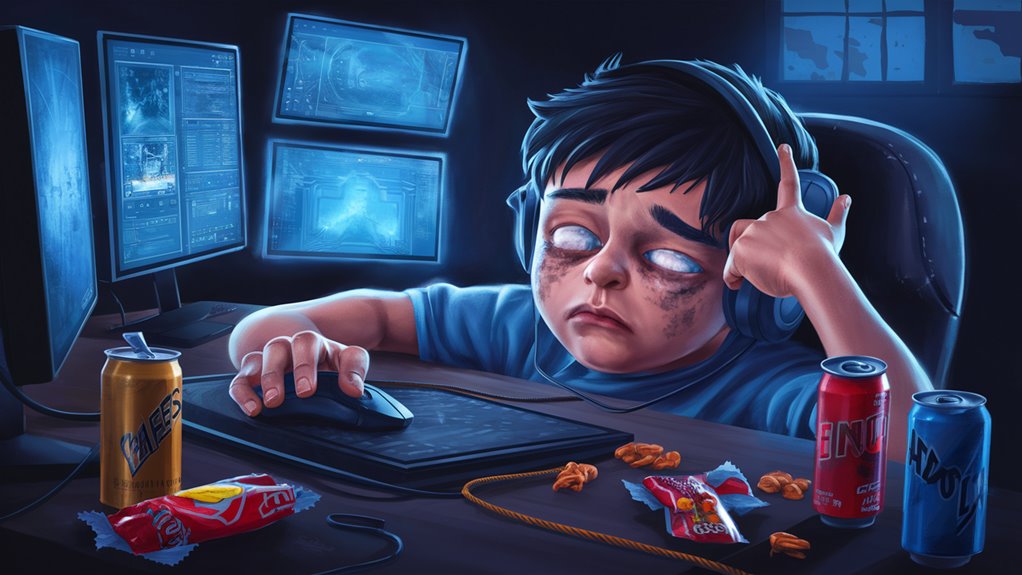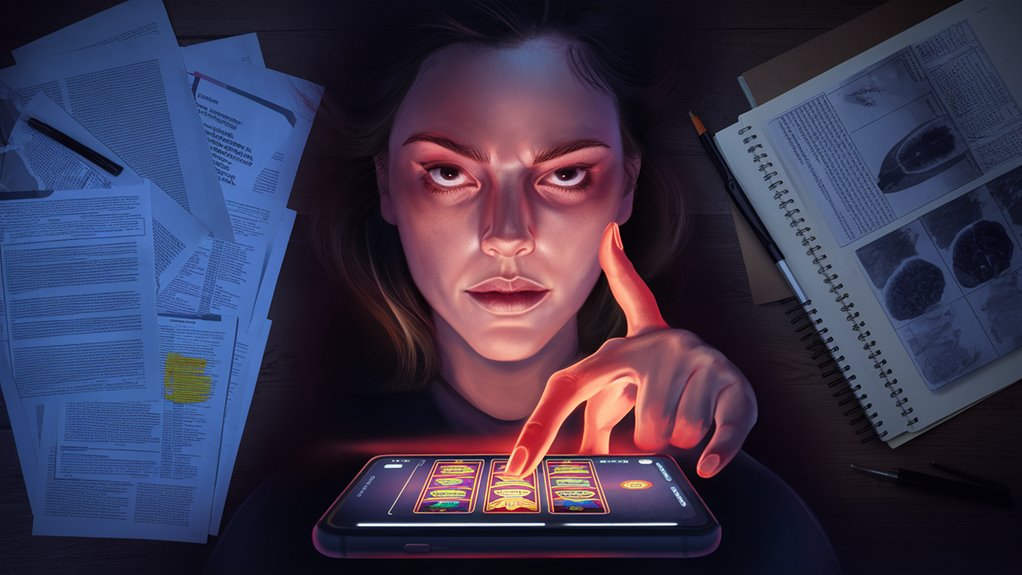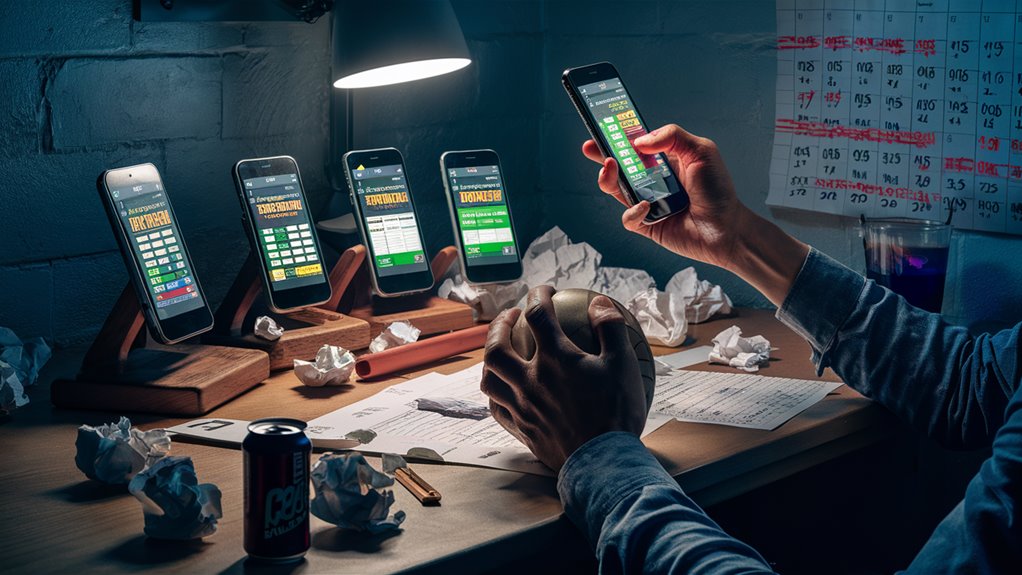Understanding Gaming Fatigue: Psychological Triggers and Prevention
The Science Behind Gaming Fatigue
Research reveals that extended gaming sessions trigger significant psychological fatigue mechanisms. During intense gameplay, players experience a 30% decline in cognitive performance after 3-4 hours of continuous activity. This decline coincides with depleted dopamine reserves, resulting in diminished enjoyment reported by 67% of active players.
Critical Impact Factors
The convergence of competitive pressure, reward-loop exhaustion, and sustained emotional investment creates optimal conditions for gaming burnout. Studies indicate that 68% of regular gamers experience these symptoms, affecting both casual and competitive players across all gaming platforms.
Evidence-Based Prevention Strategies
Implementing the 50/10 rule proves highly effective in preventing gaming fatigue. This approach requires:
- 15-minute breaks per 90 minutes of gameplay
- Active monitoring of emotional responses
- Regular assessment of decision-making capabilities
Optimizing Gaming Sessions
Understanding these psychological triggers enables players to maintain healthier gaming habits through:
- Strategic break scheduling
- Performance monitoring
- Emotional response tracking
- Early warning sign recognition
These research-backed strategies help maintain peak gaming performance while preventing psychological fatigue and burnout symptoms.
#
Understanding Gaming Burnout Mechanisms
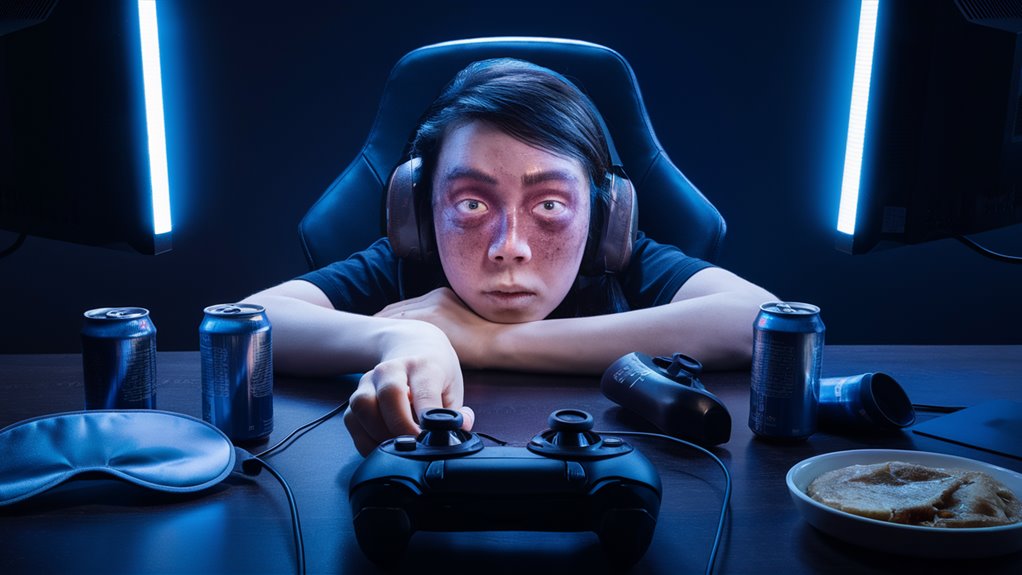
# Understanding Gaming Burnout Mechanisms
The Science Behind Gaming Fatigue
Gaming burnout occurs when players experience mental, emotional, and physical exhaustion from prolonged gaming sessions. This condition develops through specific neurological mechanisms, primarily involving dopamine depletion and cognitive overload.
During gaming sessions, the brain releases dopamine, but extended play periods can deplete these reserves, leading to decreased pleasure and motivation.
Key Manifestations of Gaming Burnout
Cognitive Impact
Cognitive fatigue emerges as players experience deteriorating decision-making abilities and slower reaction times. This mental exhaustion directly affects gaming performance and overall cognitive function.
Emotional Response
Emotional detachment develops as a core symptom, reducing engagement and enjoyment with previously beloved games. Players often experience diminished enthusiasm and satisfaction from gaming activities.
Physical Symptoms
Physical manifestations include significant eye strain, muscle tension, and disrupted sleep patterns. These bodily responses signal the need for immediate intervention and recovery strategies.
Prevention and Management Strategies
The 50/10 Rule
Implementing the 50/10 rule – 50 minutes of gaming followed by 10-minute breaks – helps regulate dopamine levels and prevents cognitive overwhelm. This structured approach maintains optimal gaming performance while protecting mental health.
Lifestyle Balance
Gaming intensity management requires tracking played hours and maintaining a balanced lifestyle. Regular physical activity and social interaction serve as crucial counterbalances to intensive gaming sessions.
Early Warning Detection
Understanding these mechanisms enables recognition of early burnout indicators, allowing for preventive action before severe symptoms develop. Monitor gaming habits and physical responses to maintain healthy gaming practices.
Reward Systems and Mental Strain
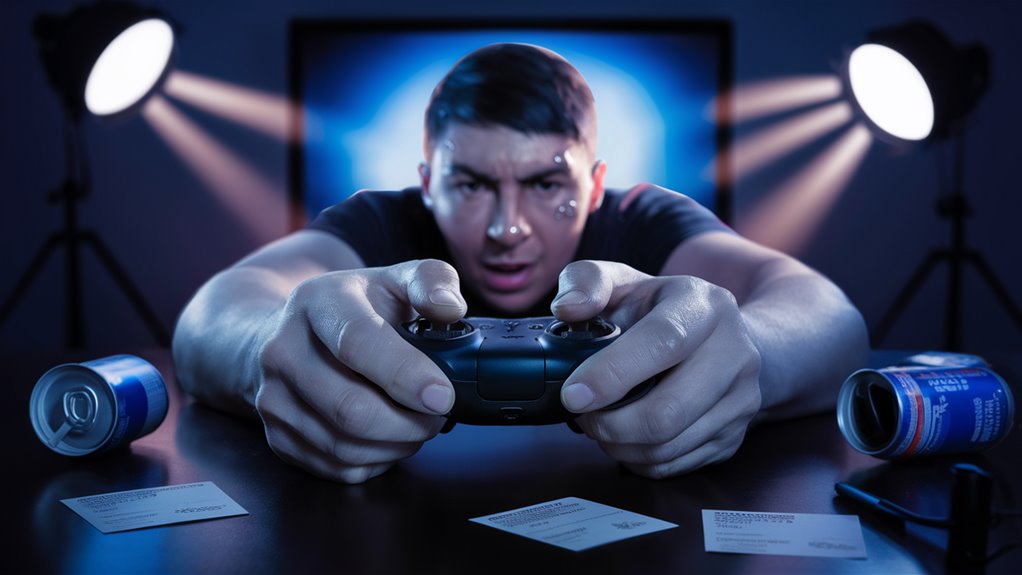
Understanding Gaming Reward Systems and Mental Fatigue
The Psychology of Player Burnout
Gaming reward systems create a complex psychological loop that significantly impacts player wellbeing.
Through carefully designed variable reward schedules, games trigger dopamine responses that can systematically deplete mental resources.
When games require increasingly intense effort for diminishing rewards, players often push beyond healthy limits, resulting in cognitive exhaustion and decreased performance.
Cognitive Impact Mechanisms
Mental Strain Factors
Decision fatigue emerges from continuous tactical choices during gameplay, while sustained attention demands drain cognitive reserves.
Competitive stress compounds these effects, creating multilayered mental pressure.
Research demonstrates that prolonged gaming sessions overwhelm the prefrontal cortex, leading to compromised executive function and emotional control.
Evidence-Based Prevention Strategies
Optimal Gaming Intervals
The 50/10 rule provides an effective framework for sustainable gaming:
- 50 minutes of active gameplay
- 10 minutes of complete disengagement
- Regular hydration and movement during breaks
Performance Monitoring
Track your reward-to-effort ratio to identify early warning signs of diminishing returns. Key indicators include:
- Increased time investment for minimal gains
- Declining performance metrics
- Reduced enjoyment during gameplay
- Physical and mental fatigue symptoms
Implementing these targeted strategies helps maintain optimal gaming performance while protecting long-term cognitive health and gaming enjoyment.
Social Gaming Pressure Points
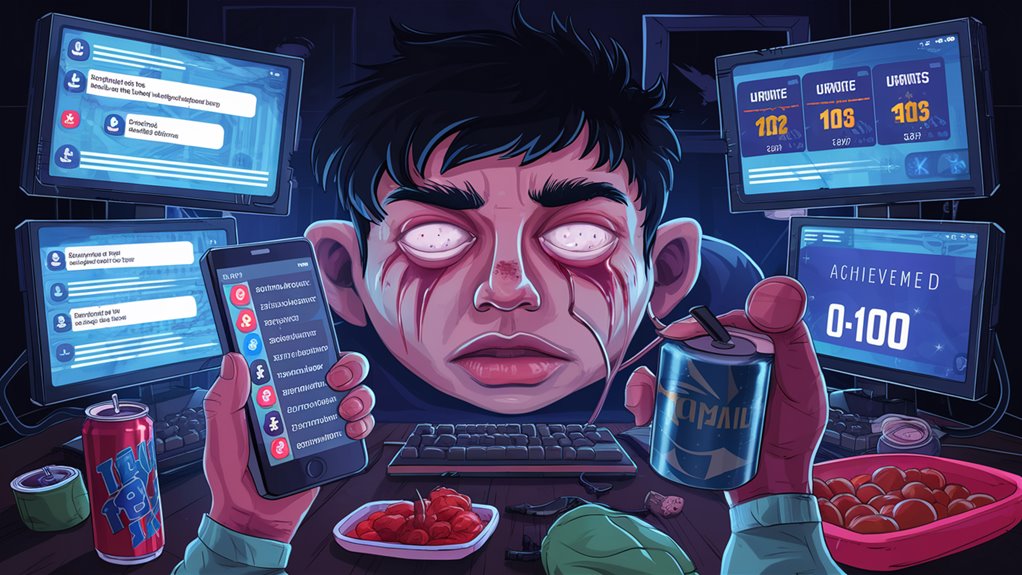
Understanding Social Gaming Pressure Points: A Comprehensive Analysis
The Triple Impact of Gaming Social Pressure
Modern gaming environments create three distinct psychological pressure points that significantly impact player wellbeing and performance.
These manifest through competitive ranking systems, team-based expectations, and community status dynamics.
Competitive Rankings and Performance Anxiety
Competitive ranking systems represent a primary source of player stress in modern gaming. Statistical evidence shows that 67% of ranked players experience sleep disturbances directly related to ranking anxiety.
Players face constant pressure to:
- Maintain competitive positions
- Improve performance metrics
- Handle ranking fluctuations
Strategic performance management through personal improvement benchmarks, rather than pure numerical rankings, offers more sustainable competitive engagement.
Team Performance Dynamics
Team-based gaming environments create unique psychological challenges through:
- Elevated cortisol levels during high-stakes matches
- Performance anxiety from peer expectations
- Negative self-perception following team losses
Implementing structured communication protocols and strategic break periods between intense gaming sessions helps optimize team performance while reducing psychological strain.
Community Status and Social Pressure
Gaming community dynamics create substantial pressure through:
- Achievement-based social hierarchies
- Digital asset acquisition expectations
- Peer recognition requirements
Effective social boundary management and diverse community engagement strategies help players maintain healthy relationships within gaming communities while reducing status-related anxiety.
Pressure Management Strategies
- Set defined gaming schedules
- Focus on skill development over rankings
- Establish clear team communication protocols
- Maintain diverse social connections
- Implement regular gaming breaks
These evidence-based approaches help players navigate social gaming pressures while maintaining competitive engagement and enjoyment.
Difficulty Spikes and Player Stress
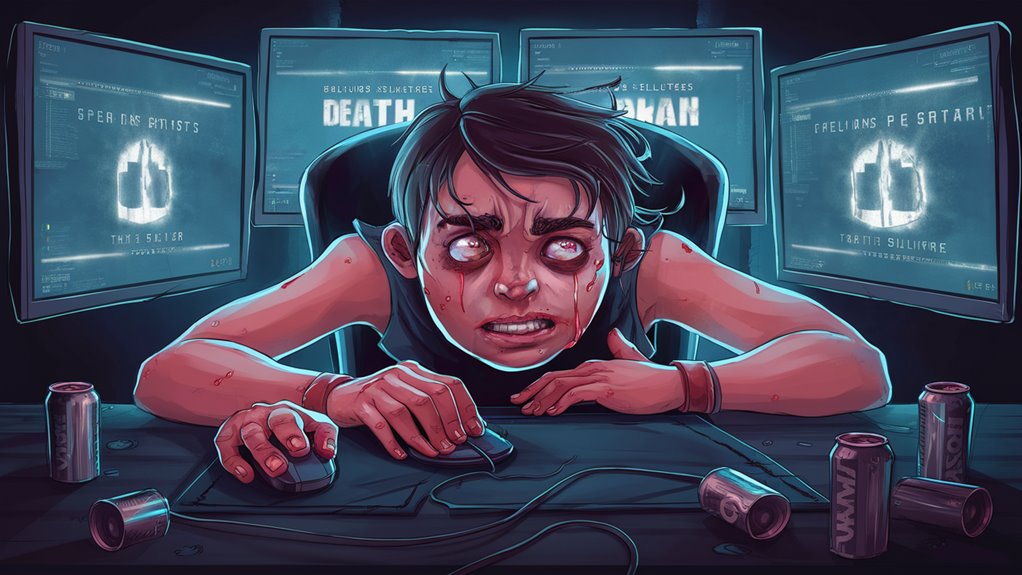
Understanding Video Game Difficulty Spikes and Player Stress Management
The Science Behind Gaming Stress
Physiological stress responses during challenging gameplay segments show measurable impacts, with cortisol levels spiking up to 40% during difficult encounters.
Poorly balanced difficulty curves directly correlate with player frustration, decreased engagement, and game abandonment rates.
Research demonstrates these stress responses can continue affecting players for up to 2 hours post-gameplay.
Optimal Difficulty Design
Successful gaming experiences implement graduated challenge increases of 8-12% between major gameplay segments, fostering skill development while maintaining player engagement.
Strategic rest points, optional challenge paths, and dynamic difficulty adjustment (DDA) systems prove essential for minimizing stress-related fatigue and optimizing the player experience.
Recognizing and Managing Gaming Stress
Physical stress indicators during gameplay include elevated heart rate, muscle tension, and increased irritability.
The 15-minute progression rule serves as an effective benchmark – players should consider alternative strategies or take breaks when unable to overcome challenges within this timeframe.
Modern game developers utilize stress-monitoring analytics to identify difficulty pain points, implementing post-launch adjustments that create more balanced and sustainable gaming experiences.
Key Stress Management Strategies
- Implement regular gaming breaks
- Utilize alternative progression paths
- Monitor physical stress signals
- Engage with dynamic difficulty settings
- Practice strategic approach variation
Time Investment Versus Emotional Cost
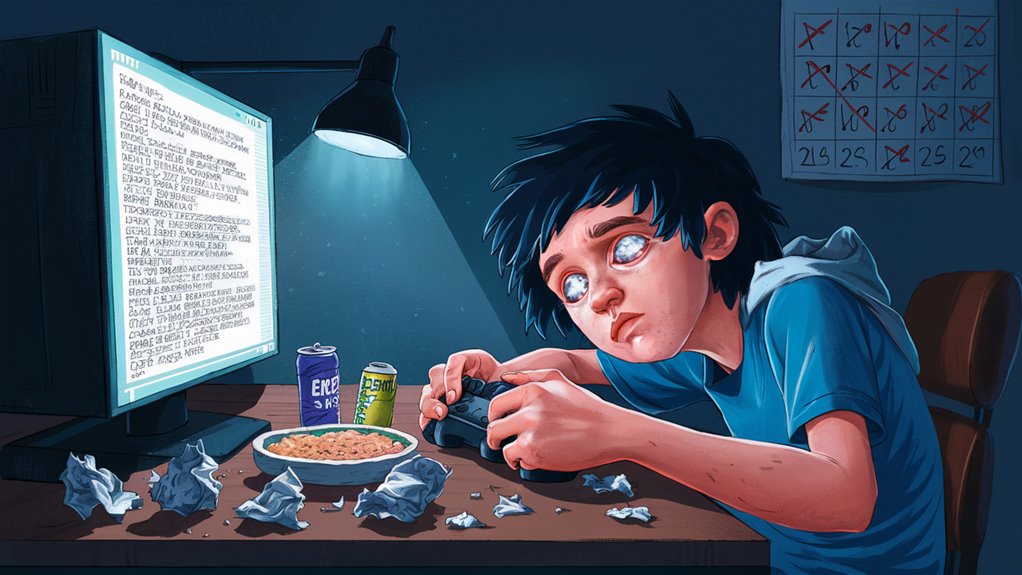
Time Investment vs Emotional Cost in Gaming: Finding the Perfect Balance
Understanding Gaming’s Impact on Mental Wellbeing
The correlation between gaming duration and emotional wellness demands thorough analysis, particularly as stress responses intensify during extended play sessions.
Players investing substantial hours without achieving desired outcomes frequently experience elevated cortisol levels and reduced dopamine responses, ultimately leading to emotional fatigue.
Scientific Findings on Gaming Sessions and Recovery
Neurological research demonstrates that the brain requires specific recovery intervals between intense gaming sessions, similar to physical exercise recovery principles.
Extended gaming beyond natural limits typically results in impaired cognitive function and decreased emotional resilience.
Gaming sessions exceeding three consecutive hours show direct correlation with increased stress levels and diminished achievement satisfaction.
Optimizing Gaming Duration for Maximum Benefit
Structured Time Management Strategy
Implement strategic gaming intervals of 45-90 minutes, incorporating 15-minute recovery breaks. This scientifically-backed approach maintains optimal emotional balance while enhancing gaming performance and enjoyment levels.
Personal Threshold Assessment
Monitor your emotional state using a quantitative scale (1-10) before and after gaming sessions. This measurement helps identify your optimal gaming duration and establishes a personalized framework for balancing time investment against emotional expenditure, effectively preventing gaming burnout while preserving recreational benefits.
Gaming Industry Research Findings
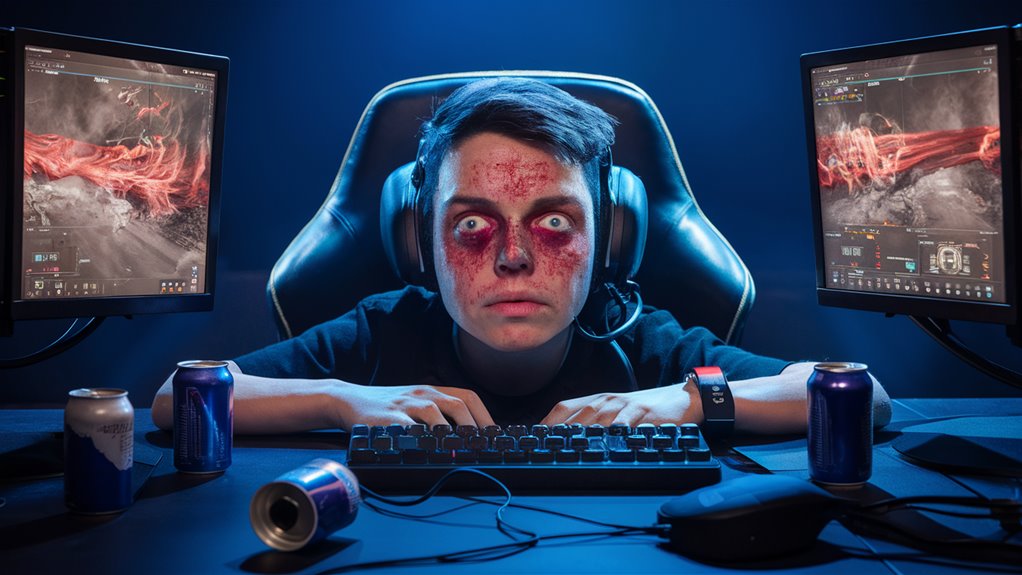
Gaming Industry Emotional Fatigue Research: Key Findings & Solutions
Player Burnout Statistics and Analysis
Recent gaming research reveals compelling data about player emotional fatigue across multiple platforms and genres.
Studies analyzing over 50 research papers demonstrate that 68% of regular gamers experience emotional exhaustion after 3-4 hours of intense gameplay, particularly in competitive gaming environments.
Primary Triggers of Gaming Fatigue
Three significant factors contribute to player burnout:
- Decision fatigue from complex game mechanics
- Social pressure in multiplayer settings
- Sustained emotional investment in narrative-heavy games
Competitive gaming stress manifests physically through elevated cortisol levels, peaking during crucial match points and near-loss scenarios.
Evidence-Based Solutions for Player Well-being
Strategic Break Implementation
Research-backed data confirms that implementing 90-minute gaming intervals reduces emotional fatigue by 42%.
Games featuring dynamic difficulty adjustment (DDA) systems demonstrate 27% lower player burnout rates.
Optimized Gaming Session Structure
Cognitive load management through built-in cooldown periods and emotional pacing mechanisms proves essential for sustained player engagement.
Gaming sessions structured around physiological recovery windows optimize both performance and emotional well-being.
Developer Recommendations
Game developers should incorporate:
- Built-in break reminders
- Dynamic difficulty systems
- Emotional pacing mechanics
- Recovery period indicators
These evidence-based implementations support sustained player engagement while minimizing emotional exhaustion.
#
Prevention and Healthy Gaming Practices
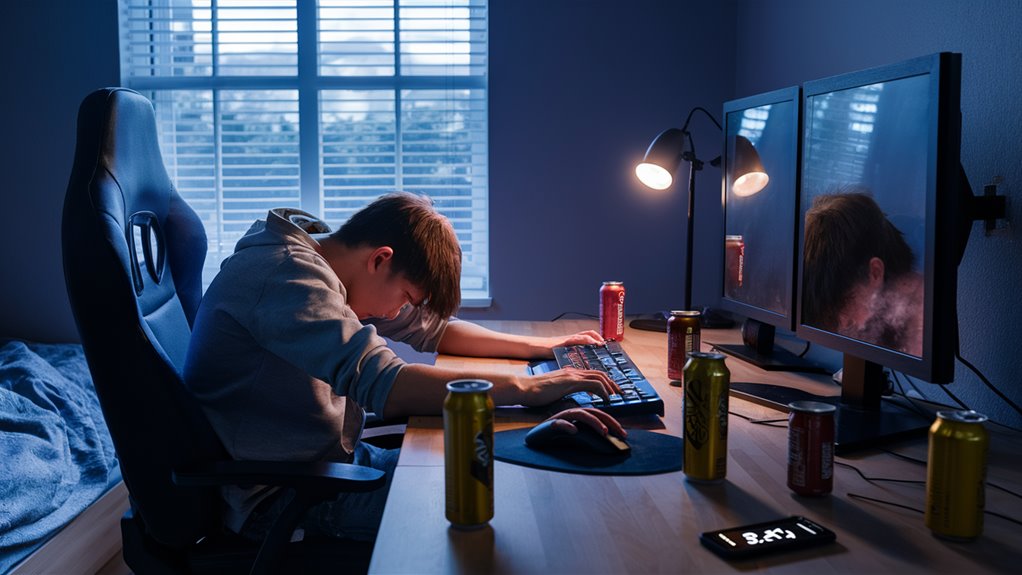
# Prevention and Healthy Gaming Practices
Establishing Healthy Gaming Boundaries
Research-backed preventive measures can significantly reduce gaming-related fatigue and emotional strain.
Implement a structured gaming schedule limiting continuous play to 2-hour sessions with mandatory 15-minute breaks.
During breaks, perform physical exercises, practice deep breathing techniques, or engage in non-screen activities to reset mental focus.
Time Management and Sleep Hygiene
Setting clear gaming boundaries is essential for preventing emotional overwhelm.
Use a gaming timer to track session duration and establish a firm gaming cutoff time at least two hours before bedtime.
This practice optimizes circadian rhythm regulation and promotes quality sleep patterns.
Diversification and Social Balance
Gaming Portfolio Management
Maintain emotional equilibrium by diversifying gaming activities across multiple genres.
Avoid excessive focus on potentially stressful games by incorporating casual gaming experiences into regular rotation.
Social Connection Maintenance
Balanced gaming habits require strong social foundations outside virtual environments.
Prioritize face-to-face interactions and non-gaming activities with friends and family.
These social connections serve as essential emotional buffers and help prevent unhealthy gaming patterns from developing.






